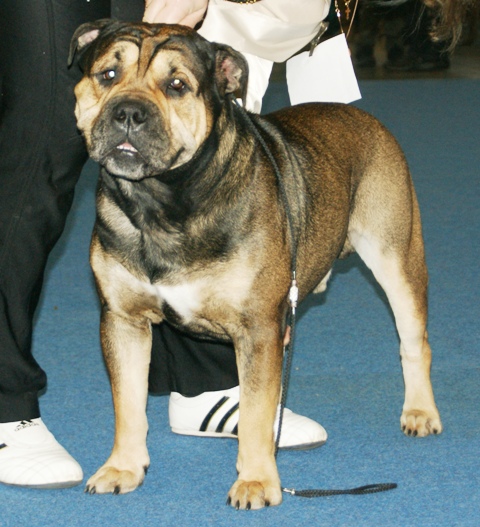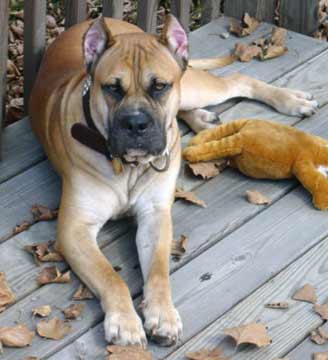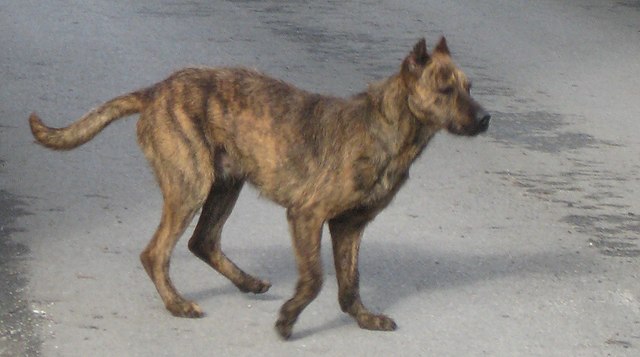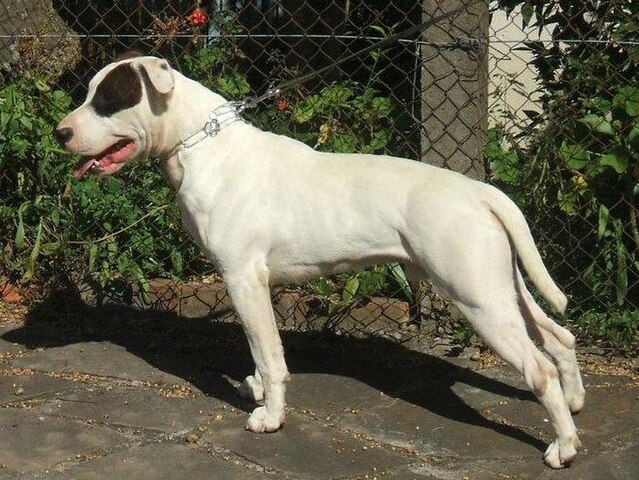The Majorca Mastiff is a guard dog, hunting dog, and bull fighting dog from Spain, established as a breed in 1923. Also known as the Ca de Bou, Presa Canario Mallorquin, or the Majorca Bulldog – with whatever name he goes by, he is medium-sized in height but built like a tank. He is brave yet loyal to his owners and otherwise well-tempered to those whom he knows. Although he is a guard dog, with early socialization he should be social and well-behaved with strangers. Males tend to be a little friendlier in general while females can be more suspicious as well as more protective.
The Majorca is quiet in the home and can be a good match for families – with the caveat that they should only be owned by those who are experienced with molosser breeds! They are naturally protective, and this combined with their powerful build and great strength means that in the wrong hands they could potentially end up hurting someone. If there are children in the home, supervision is required to ensure that everyone is playing nicely (this includes making sure kids aren’t teasing the dog). This isn’t to say that the breed is bad with children – in fact they are usually very patient with kids – but common sense, training and early socialization is a must!
With other pets, some Majorcas get along very well while others… less so. Particularly when it comes to cats and other smaller animals, the sheer size of these dogs make accidents more likely to occur. As the Majorca was also used in both bull fighting and dog fighting, they can have a naturally combative attitude. Mileage will vary considerably with some individuals unable to live with other pets at all, while others can be just fine. The amount of socialization the dog has had and the skill of the owner are definitely factors, but genetics play a huge part here as well. Unfortunately many Majorcas do not mesh well into a multi-dog household.
Majorca Mastiffs are a rare breed, recognized by the UKC but not the AKC. This means that prospective puppy owners are likely to have to import a dog from overseas. The breed nearly went extinct in the early 20th century but luckily, there was enough of a following that breeders were able to save them before they disappeared. This said, some sources state that the current Majorca is a recreation and other breeds had to be mixed in in order to save them. Either way, numbers are small and one won’t just “stumble upon” a puppy or adult dog.
Majorcas are not high energy in the home, however they do need a fair bit of exercise and do best with people who are active. At least an hour a day of structured exercise is recommended, and in addition they should also receive mental stimulation in the form of games, dog sports and of course formal training. Keep in mind that these powerhouses also eat a lot per day, particularly the larger males. Be prepared to spend enough money to keep the dog well-fed, while exercising enough to keep excess weight off and the body healthy.
While the Majorca Mastiff has a great potential to learn and does enjoy pleasing his owners, he is not always the easiest breed to train for an inexperienced person. He benefits from training that is balanced, firm and yet always fair. Owners and/or trainers should utilize patience as he may be a little slower to teach than other, more enthusiastic breeds. Despite the fact that he can be more of a challenge, however, obedience training is an essential must for this breed! He is too strong a dog (both in body as well as mental resolve) to be given free reign to do whatever he wants in the home. While the requirements for ownership can be high, when all of his mental and physical needs are met this can be an immensely loyal and devoted breed for the right owner.




